Spinach (Spinacia oleracea) plants are one of the few vegetables that can withstand a light frost. It is a fast-maturing cool-season crop that grows best in the spring and near the end of the growing season. Spinach is also one of the healthiest vegetables on the planet, known for its high iron content and versatile uses in the kitchen.
Spinach grows from a rosette of large, dark-green leaves on upright stems that can reach up to 18 inches tall. Spinach tolerates full sun to light shade and requires six weeks of cool weather from seeding to harvest. Moreover, spinach is prone to turning bitter and bolting in warm weather, which is why gardeners consider companion plants.
Specific companion plants can help your spinach grow faster, bigger, and more flavorful. Let’s take a look at the best companion plants for spinach as well as what plants are to be avoided.
30 Spinach Companion Plants
By planting spinach with companion plants, you can increase yields, protect spinach from pests and diseases and maximize garden spaces.
1. Tomatoes

Tomatoes are excellent spinach companion plants, and they are warm-season crops and have a long time to maturity, so it’s safe to interplant spinach between tomato plants. Intercropping these two plants creates a living mulch/ground cover to help maintain more excellent soils with moisture.
Benefits: Intercropping these plants creates living mulch or ground cover to help maintain excellent soils with more moisture.
How To Plant: Plant spinach in between tomatoes so spinach can be harvested long before the tomatoes can over-shade and crowd them out.
2. Borage

Borage is an old-fashioned plant that can grow up to 2 feet tall. It grows quickly as an annual but will colonize a corner of the garden by self-seeding and reappearing yearly. Their flowers are attractive to bees and sometimes grown as an ornamental herb for honeybee feeding.
Benefit: Borage attracts beneficial insects, repels pests, and makes certain minerals more bioavailable to your spinach. The distinct smell of borage flowers repels these pests while attracting beneficial predators that eat them.
How To Plant: Avoid planting borage directly into your spinach plants otherwise, you may risk overgrowing and out-shading your greens.
3. Leeks

Leeks are hardy biennial plants grown as a vegetable and part of the allium family. They are an alternative to onions and are incredibly high in Vitamins A and K and Vitamin B-6.
Benefits: The pungent smell of leeks repels pests and loosens the soil. They act like a natural insecticide and pest repellant for spinach for carrot rust that sometimes feeds on spinach.
How To Plant: Leeks can take up to 100 days to mature, so plant spinach near leeks at any stage of their growth. Space spinach at least 8-10″ from leeks plants.
4. Cauliflower
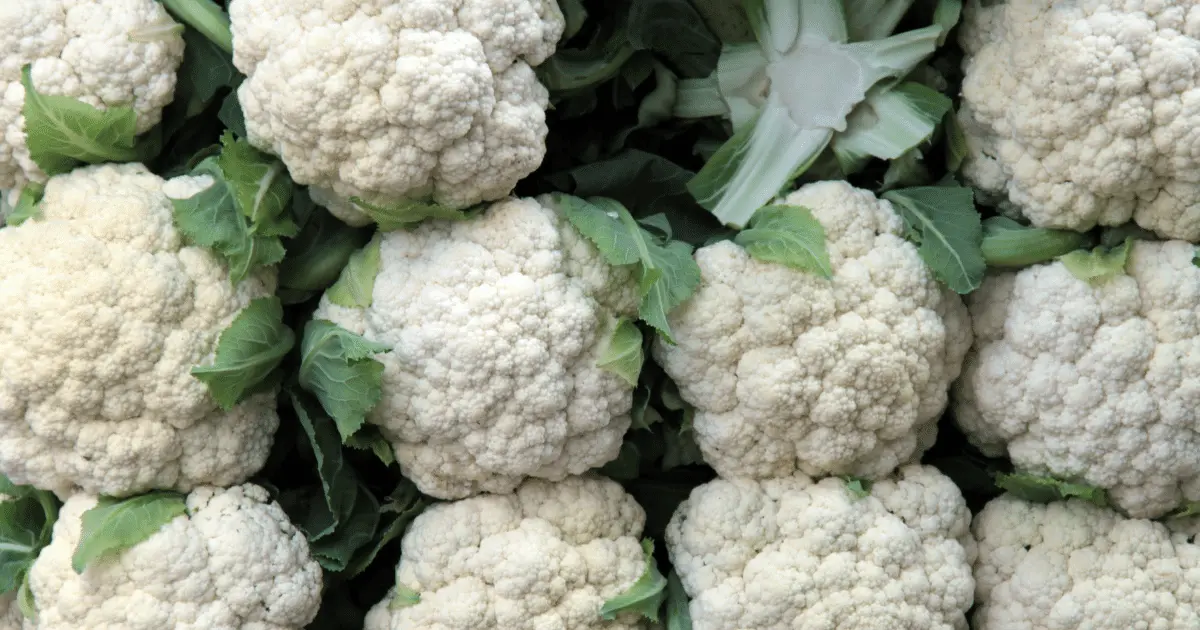
Pairing cauliflower and spinach together has resulted in higher yields for both plants. Cauliflower is a large plant that isn’t recommended for small-space gardens.
But if you sow spinach alongside newly transplanted cauliflower, you will be able to harvest the two crops from the same amount of space. This means that by the time the slow-growing cauliflower starts to get too big, you will complete the spinach harvest and let the cauliflower take over.
Benefits: Maximizes yield and provides shade.
How To Plant: Sow spinach in rows or clumps about 6-10″ from newly-transplanted neighboring cauliflower plants.
5. Alliums

Alliums are attractive plants with a broad palette of colors, heights, bloom times, and flower forms. They make excellent cut flowers for fresh or dried bouquets. They are also drought-tolerant plants that prefer to be grown on the dry side.
Benefits: Alliums are excellent pests deterrents and attract beneficial insects like parasitic wasps and ladybugs.
How To Plant: The spacing for alliums ranges between 4″ and 8″, and the bigger the bulb, the more space they will need.
6. Radishes

Radishes are a group of root vegetables with a pervasive flavor. They are low in calories and provide a range of nutrients.
Benefits: Radishes make good companions for spinach because they are a rapidly maturing plant, and they can serve as a trap crop for leaf-mining insects such as caterpillars, sawfly larvae, maggots, beetles, and weevil grubs.
How To Plant: Radish and spinach are perfect for growing in a window box. Radishes will mature within 20-25 days, while spinach will mature within 40-45 days.
7. Strawberries

Strawberries will make an excellent companion to your spinach plant and will allow you to maximize space in your garden. Strawberries running, ground-covering growth habit helps to keep the soil cool, and excellent moist soils help to prevent the spinach from bolting too quickly.
Benefits: Strawberry maximizes space in your garden.
How To Do Plants: Plant a row or 2 of spinach alongside strawberry crowns when planting.
8. Eggplants

Eggplants, commonly known as augerbine is a remarkable spinach companion plants. Eggplant is a tear-drop-shaped vegetable from the nightshade family, and it is also a cold-sensitive vegetable that requires a long warm season for the best yields.
Benefits: Eggplant maximizes space and provides shade for spinach plants.
How To Plant: Eggplants grow tall and stay in the ground throughout the summer. Plant spinach at the same time as planting eggplant and leave a minimum of 6″ space between the plants.
9. French Marigolds
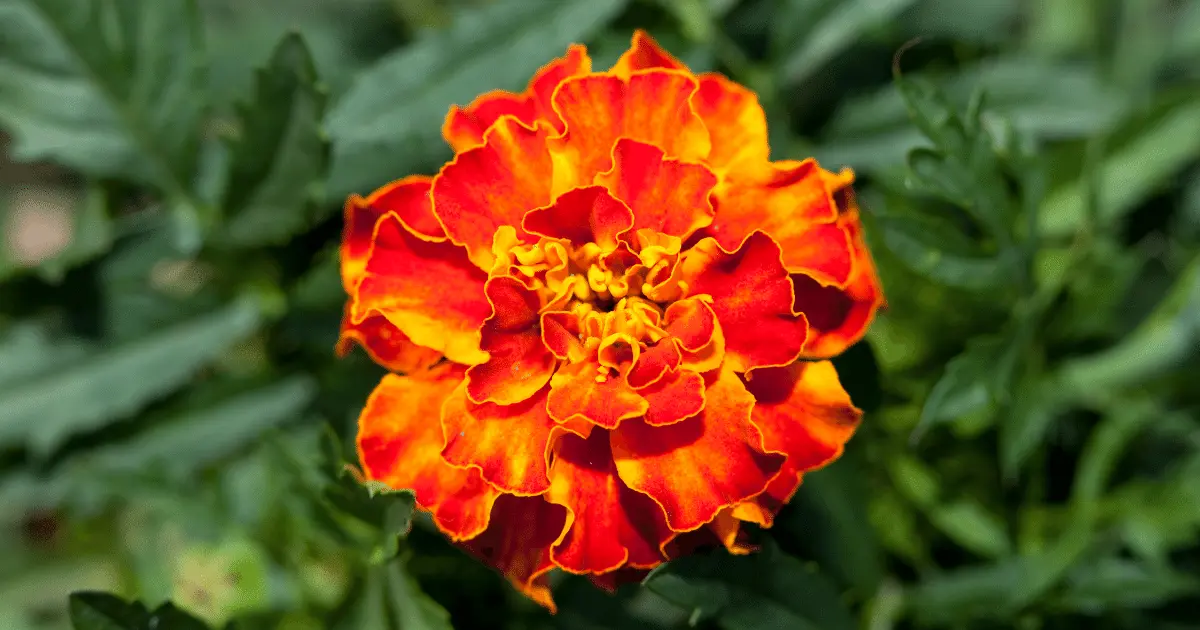
French marigolds are bushy plants that are 15-30 cm tall. They can be planted anytime between spring and the mid-summer months.
Benefits: The unique aroma of the French marigold flowers repels root-knot nematodes, aphids, and rabbits.
How To Plant: Plant French marigolds at the row ends or between spinach beds every few feet for a boost. Plant 3-4 marigold plants per bed along the perimeters of a raised bed, and keep the marigolds at least 6″ away from the spinach plant to ensure they don’t out-compete your spinach.
10. Watercress

Watercress is a member of the brassica family that can be grown as an annual or a perennial ground cover. It is a fast-grown peppery green plant but won’t out-compete your spinach greens or attract similar pests.
Benefits: Watercress maximizes space and acts as a living mulch.
How To Plant: Watercress can be grown from seeds, transplants, or cuttings.
11. Beans

Beans are a nitrogen-fixing legume that can make spinach grow faster and larger. The slight shade of bush beans can also help prevent the spinach from bolting in hot weather.
Benefits: Beans improve vigor and prevent bolting.
How To Plant: Plant beans 2-4 inches apart in rows 2-3 feet apart.
12. Salad Greens
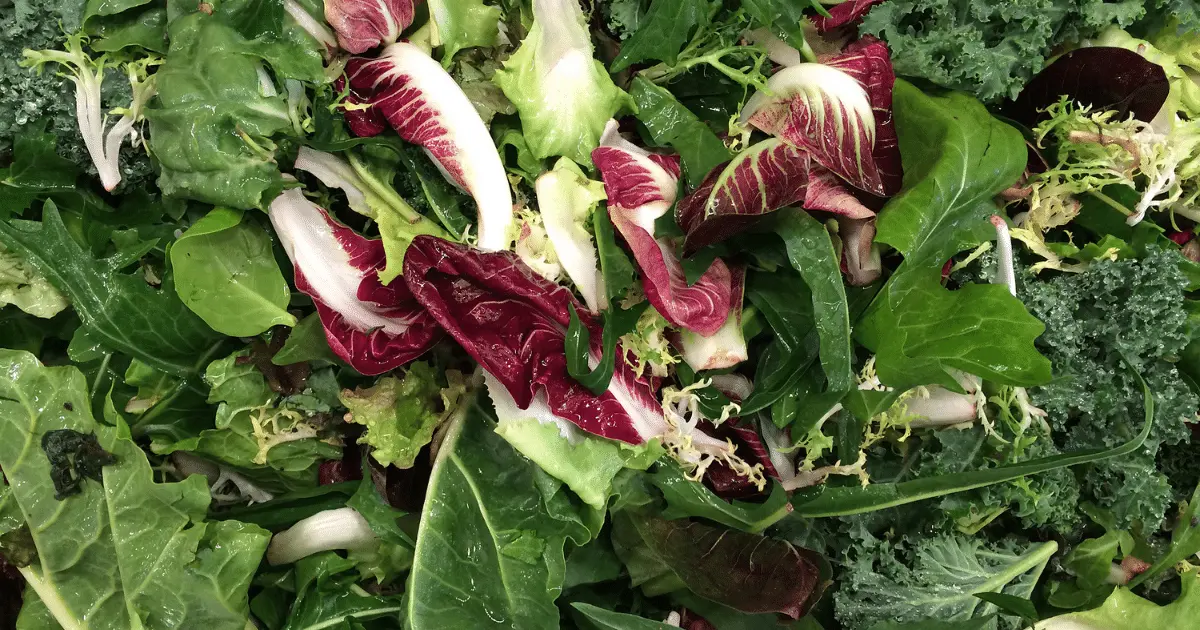
Salad greens are a popular companion for spinach plants because they are cared for the same way. Salad greens need continuous access to lots of water to produce succulent leaves.
Benefits: Salad greens increase diversity and maximize space when planted alongside your spinach plant.
How To Plant: Plant spinach 3-6″ from the rows of your salad greens.
13. Scallions

Scallions are another vegetable perfect for planting with your spinach plant. Scallions grow quickly and can tolerate the cool spring temperature that spinach loves. They are a thin leaf shape that won’t overshadow spinach or compete for root zone space.
Benefits: Scallions have a strong scent that repels aphids, whiteflies, and mites.
How To Plant: You can transplant scallions from your nursery or plant onion sets while you plant spinach. However, they only need 2-3″ of space from your spinach plants.
14. Sugar Snap Peas

Sugar snap peas are members of the Fabaceae family that are widely loved for their ability to make nitrogen more available in the soil.
Benefits: Sugar snap peas fix nitrogen and provide shade for spinach plants.
How To Plant: Sugar snap peas are best grown on a trellis that runs north to south. You can plant spinach on either side of the peas to protect them from the harsh sun.
15. Swiss Chard
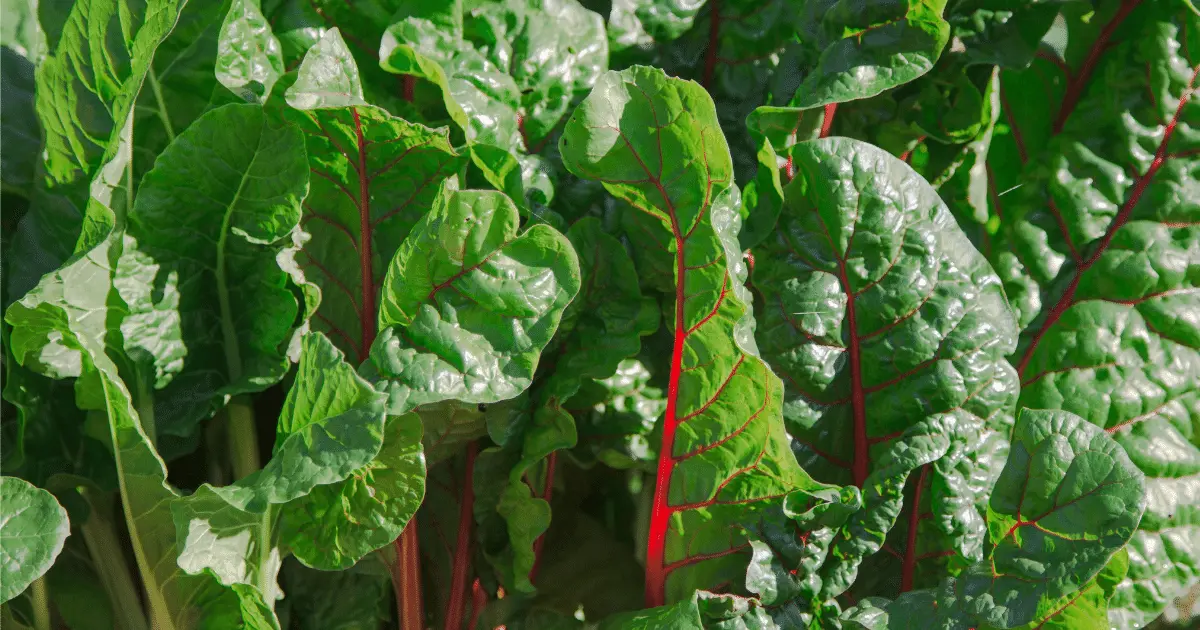
Swiss chard and spinach are both Chenopodiaceae or Amaranthaceae family members, making them a lovely pair. They grow and taste well when planted together.
Benefits: Swiss chard provides spinach with shade in the hottest months of summer. They also maximize yields and loosen the soil.
How To Plant: Directly sow spinach and transplant shards, giving them at least 6-8″ space.
16. Kale

Kale is known for being a part of the brassica family that grows well when planted with spinach. Kale is also a cold-tolerant plant perfect for early spring or late fall succession.
Benefits: Kale maximizes space and provides shade. For this reason, you can tuck your spinach plant throughout your kale beds, especially when kale transplants are small in the spring.
How To Plant: Plant spinach about 6″ from kale plants. When kale grows up, it will shade out the spinach. Another way is to plant spinach 8-12″ from your kale plant in the late summer or early fall to take advantage of the shade that will prevent the spinach from bolting in the sun.
17. Bok Choy

Bok Choy and spinach are cold-tolerant, heat-loathing crops with similar growing requirements. Bok choy prefers well-drained, fertile soil high in organic matter.
Benefits: Bok choy adds diversity and uses bare space.
How To Plant: Direct seed or transplant bok choy plants in rows 5-6″ from spinach plants.
18. Yarrow

Yarrow is a medicinal plant that attracts beetles that eats spinach pests. It is also a hardy, low-maintenance plant that grows well with almost all plants in the garden.
Benefits: Yarrow attracts beneficial predator insects to your spinach plants.
How To Plant: Yarrow grows several feet tall and provides a little too much shade for spinach plants. Therefore, plant it at least 1-2 feet at the ends of the rows or along the margin of your spinach beds.
19. Sweet Alyssum
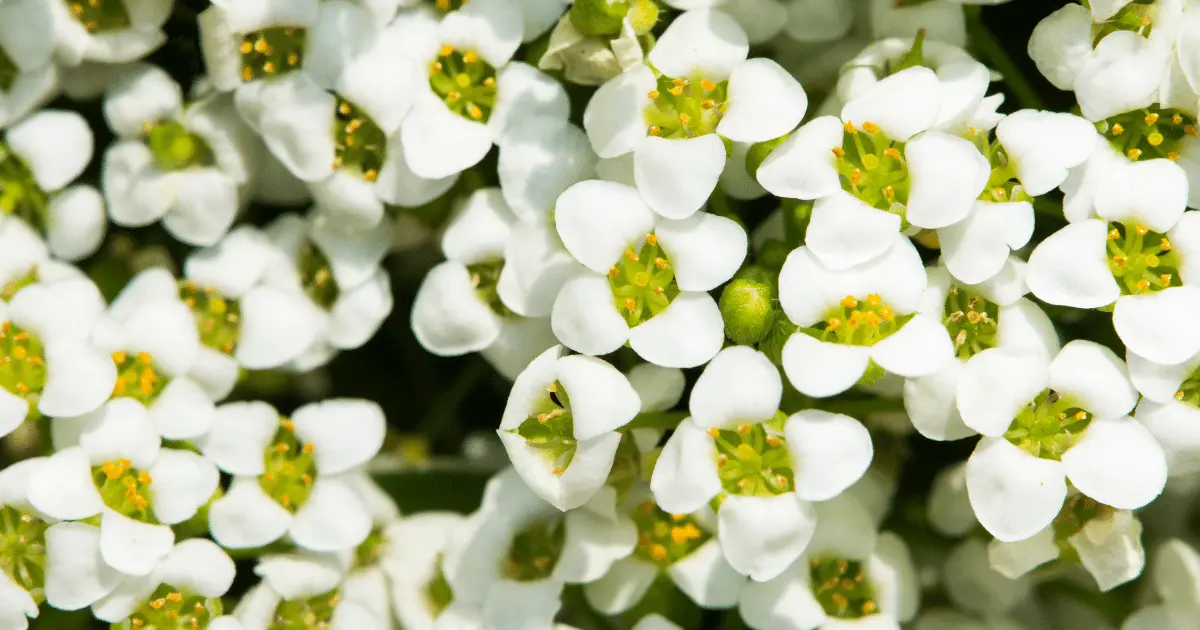
Sweet alyssum, sometimes called white alyssum or Lobularia maritime, is an all-around companion plant for almost all plants in your garden, including spinach. It is a good spinach companion plant because it doesn’t spread or compete with spinach for light.
Benefits: Sweet alyssum is best known for its nectar which attracts beneficial insects and pollinators that eat pests that may feed on your spinach plants.
How To Plant: Plant alyssum at the ends of spinach rows or in the corners of vegetable-raised beds.
20. Lettuce

Lettuce can complement your spinach plants due to their similar size and maturity time. These two plants are perfect for intercropping, and you will get higher yields from planting them together instead of separately. When planted together, they create a ground cover to keep the soil cooler, which will keep the spinach plant from bolting or going to seed just a little longer.
Benefits: Lettuce complements growth as well as the maximum yield and biodiversity.
How To Plant: You can grow lettuce and spinach within rows or directly alongside each other with a 6″ space.
21. Nasturtium

Nasturtium is a highly ornamental flower that is very attractive to beneficial insects that can protect your spinach plants from pests. The leaves of spinach are susceptible to aphids, so it’s best to plant nasturtium close to your spinach plant.
Benefits: Nasturtium’s spicy aroma can repel or distract aphids and mites that may want to eat your spinach plants.
How To Plant: Plant nasturtiums about 1 inch deep and 3 inches apart.
You might want to check out: 25 Nasturtium Companion Plants
22. Parsley

Parsley is a moisture-loving plant that helps repel flying pests from feeding on your spinach plants. Depending on the variety, parsley can grow 12 to 20 inches tall in deep, green foliage clumps.
Benefits: Parsley repels pests and maximizes space.
How To Plant: Plant parsley 2-4″ away from spinach rows.
You might want to check out: 30 Parsley Companion Plants
23. Dwarf Sunflowers

Dwarf sunflowers will benefit a lot when planted with spinach plants. Dwarf sunflowers take less than 60 days to bloom, and as they grow, they can provide afternoon shade to your spinach plants.
Benefits: Dwarf sunflowers provide dappled shade to your spinach plants.
How To Plant: Plant dwarf sunflowers on the north end of your spinach bed before you plant spinach. Make sure they are at least 8-12″ from the spinach plants.
24. Cucumber

Cucumber is another plant that can serve as a lovely shade companion for your spinach plants. The broad leaves of cucumbers are lovely shade companions for warm-weather spinach plantings.
Benefits: Cucumber helps to prevent bolting and maximizes space. Also, they do not compete with spinach for nutrients. Instead, they are great for encouraging spinach plants to grow healthier and faster.
How To Plant: Plant spinach 1 -2 rows alongside cucumber trellises.
Note: If your cucumber is vining along the ground, do not pair it with spinach because they will outgrow the spinach greens.
25. Calendula

Calendula is one of the famous floral companions that pair with spinach. It is also a vibrant orange flower that can be used as a medicinal herb.
Benefits: The smell of calendula helps deter rabbits from spinach plants and can also repel aphids and flea beetles.
How To Plant: Plant calendula every few feet in your spinach patch to create a little “rabbit fence.”
26. Chives

Chives are closely related to scallions and can be companions planted with spinach. Chives provide an aromatic garnish while repelling pests and attracting pollinators.
Benefits: Chives attract beneficial insects and prevent diseases. The pungent smell of chives keeps pests at bay and prevents powdery mildew from taking hold of your spinach crop.
How To Plant: Sow spinach transplants around the perimeter of chives.
27. Dill

Dill is an easy-to-grow, relatively low-maintenance plant that can enhance the growth of your spinach plants. Dill grows about 2 to 3 feet tall and may produce starbursts of yellow flowers.
Benefits: Dill enhances the growth of your spinach plants and attracts beneficial insects.
How To Plant: Transplant dill into your spinach patch after 2-3 weeks. This way, the spinach will be harvested and out of the way when your dill is fully grown.
28. Cilantro
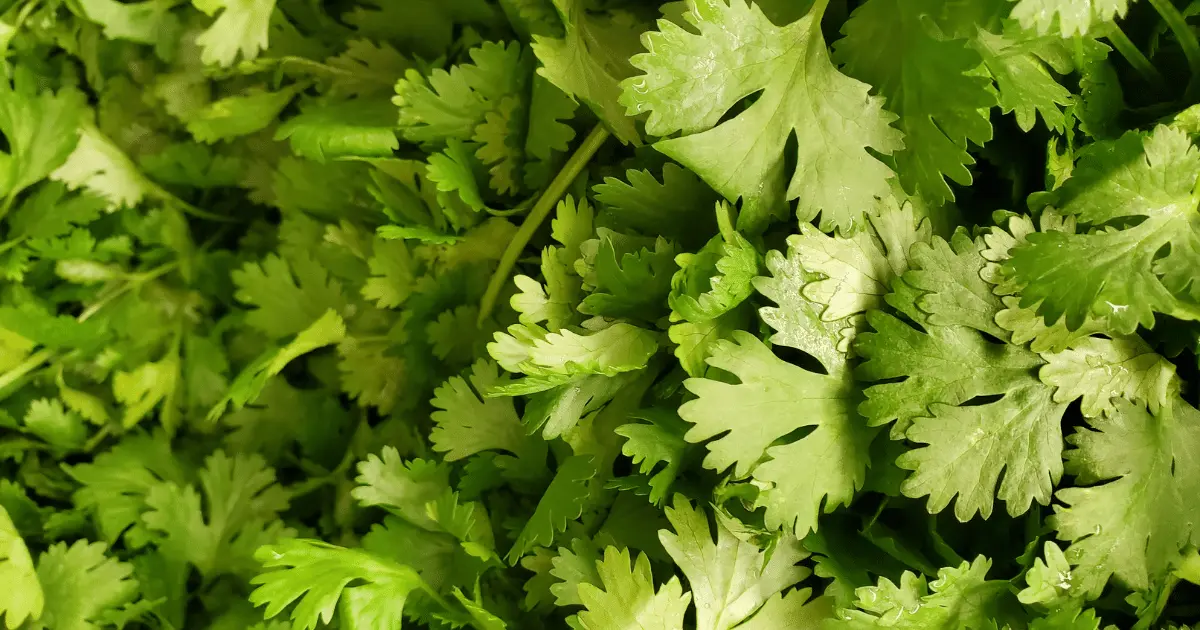
Cilantro is an annual herb that can improve the flavor of your spinach plants. Cilantro grows up to 20 inches tall (50 cm), and the leaves differ in shape and size.
Benefits: Cilantro maximizes space and attracts beneficial insects. Cilantro blossoms also attract both pollinators and beneficial predators to attack leaf-eating pests.
How To Plant: Direct seed or transplant cilantro at row ends or lines alongside spinach.
29. Peas

Pea is a member of the legume family that makes excellent spinach companion plants. Peas come in two heights; bush peas and climbing peas. Climbing peas reach 6 to 8 feet tall, while bush peas reach about 2 to 3 feet but might fall to the ground if you need to support them more.
Benefits: Peas protect spinach from soil erosion and keep the soil cool to prevent bolting.
How To Plant: Sow peas seeds 1 inch deep and about 2 inches apart.
30. Brassicas

The root systems of brassicas are located at different layers in the soil, so they don’t compete for nutrients and water. Therefore, you can safely intercrop them with spinach plants to save tons of space and increase yields.
Benefits: Brassicas draw nutrients from different levels of the soil.
How To Plant: Plant brassicas at a depth of about ¼ inch.
Plant To Avoid Planting With Spinach
Companion planting can easily gain extra yields from small spaces and improve your spinach plants’ growth. Unfortunately, not all plants are good spinach companions.
1. Fennel
Fennel is a terrible companion plant because it releases allopathic chemicals into the soil that stunts the growth of spinach plants.
2. Potatoes
Potatoes are heavy feeders and can suck up all the nutrients in the soil. They will also shade your spinach plants when they are most significant and bushy.
